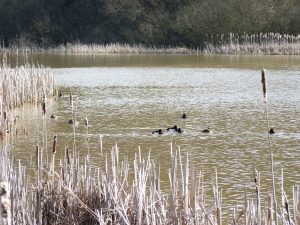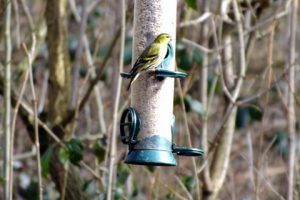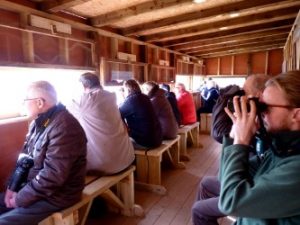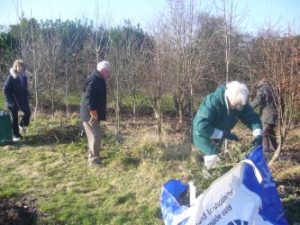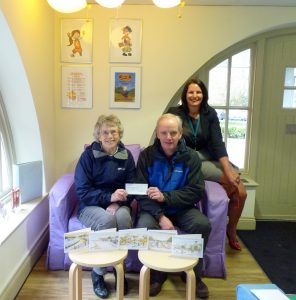We welcomed back Neil Hulme from Butterfly Conservation for a second visit, this time to take us on a seasonal journey through Sussex with a talk entitled ‘Sublime Sussex Wildlife’, highlighting the wonderful and diverse range of wildlife that we are blessed with in our county. Since his last visit to us Neil has deservedly been awarded a British Empire Medal (BEM) in the Queen’s Birthday Honours List for his outstanding services to wildlife conservation. He has been credited with saving the rare Duke of Burgundy butterfly from extinction in Sussex and has made a major contribution to saving other rare species.
In his usual informative and relaxed manner Neil illustrated his talk with many beautiful photographs. Some of these were taken by a leading wildlife photographer but many were taken by Neil himself, although he admits his camera has many limitations he was fortunate enough to be able to get very close to his subjects.
Neil explained that because of phenology i.e.; climate change and weather patterns, much wildlife could be seen a little earlier in the year than is usual. For instance the Small Tortoiseshell butterfly can be spotted around 3 weeks before its original emergence date due to its reliance on young nettles which are abundant as early as mid-February.
As we journeyed through the seasons Neil suggested ideal locations for us to visit to view wildlife, including the Norfolk Estate, Mill Hill, Cissbury Ring, Knepp Castle Estate, West Dean Woods and Harting Down, not forgetting the Rife and Beach at Ferring. It is without doubt that several landowners have played an important role in increasing numbers of threatened species; for example in 2002 the Grey Partridge faced extinction throughout Sussex and the ‘Norfolk Estate Recovery Project’ turned the situation around and increased numbers considerably and they have found a haven on the Estate. Likewise the owner of the Knepp Castle Estate developed a radically different approach by turning away from intensive farming, by using grazing animals to help establish a functioning ecosystem, where nature is given the freedom to thrive with little interference by man.
In the second half of our meeting Tricia Hall presented her Nature Notes and had brought in an abandoned nest that had been found on the ground under a conifer along the banks of the Rife. Tricia asked the audience for suggestions as to which bird had meticulously constructed it. She then made us aware of forms that were available at the back of the hall for members with ponds to take and record sightings of frogs, toads and their spawn. Tricia also advised us that a Lapwing and a Shoveler Duck had been spotted along the Rife and a flock of Golden Plover were seen in a field near the Country Centre.
Ed Miller updated us with news that the proposed ninth apartment at the former Beehive Cottage site had been refused. The four proposed houses at 44, Ferringham Lane had been approved subject to conditions. The Peugeot car dealership along the A 259 have applied to have the existing bungalow demolished, a new building for their head office and an additional showroom for a Honda car dealership. ASDA have submitted plans for a petrol station on the north east of their site and Arun DC are awaiting more details. A planning application has been submitted for 43 large storage containers to be sited at the former McIntyre’s nursery land. Ed concluded by advising us that the Arun Local Plan should be approved shortly.

